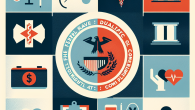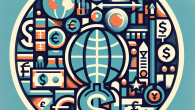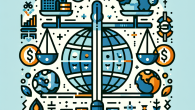
Why Emerging Market Debt Requires a New Global Risk Paradigm
The Long Shadow of Quantitative Easing: Has Global Liquidity Created a Market Mirage?
Ah, quantitative easing (QE) — that charming monetary mechanism that central banks deploy like a deus ex machina whenever global markets seem to teeter on the brink. To the untrained eye, it may appear like quite the miracle worker. Inject liquidity, stabilize markets, spark recovery. Simple, isn’t it?
But as any competent economist knows (and your humble narrator has been saying since the Bernanke heyday), the impacts of QE extend far beyond the headlines and the front pages of the Financial Times. Today, I invite you to peer beneath the surface with me, Dr. Alistair P. Whitmore, into the long shadow that QE continues to cast over global markets — and ask, quite seriously: have we built a mirage atop a desert of phantom liquidity?
What Is Quantitative Easing, Really?
For the sake of clarity — and mildly out of obligation to the less economically inclined — allow me a brief detour into the mechanics of QE. Central banks, such as the U.S. Federal Reserve, engage in QE by purchasing long-term securities from the open market. The aim is to increase the money supply, lower interest rates, and encourage lending and investment.
With traditional levers of monetary policy (like manipulating short-term rates) exhausted, QE is the proverbial bazooka — a forceful, albeit controversial, tool of last resort.
QE on a Global Scale: Everybody Gets a Turn
The U.S. may have pioneered the post-2008 QE renaissance, but they were hardly alone in embracing it. Consider:
- European Central Bank (ECB): Mario Draghi’s famous “whatever it takes” speech in 2012 solidified the Eurozone’s role in the QE parade.
- Bank of Japan (BoJ): Japan has been a QE veteran long before it was fashionable — struggling with deflation for decades.
- Bank of England: Also dove deep into asset purchases in response to Brexit and pandemic-induced downturns.
The result? An estimated $25+ trillion in global liquidity injected into the financial system over the past decade and a half. If that sounds unsustainable, that’s because — whisper it — it might very well be.
The Market Mirage: Valuations Without Fundamentals
With QE, we’ve witnessed equity markets rise not always on the strength of earnings or innovation, but often due to capital sloshing about looking for a yield. This environment has encouraged:
- Overvaluation in Equities: Major indices like the S&P 500 and Nasdaq soared, even as GDP growth trudged along cautiously.
- Risk-On Speculation: Assets with dubious fundamentals — meme stocks, SPACs, cryptocurrencies — attracted capital like moths to a flame.
- Real Estate Inflation: QE’s low rates fanned property bubbles across cities from Toronto to Wellington.
Indeed, we’ve created a world where central bank balance sheets, not company results, often dictate market movement.
The Moral Hazard Dilemma
Perhaps most troublingly, QE has crafted moral hazards in both private and sovereign behavior. Investors now operate with an implicit belief that central banks will always step in to soften collapses. This risk buffering may seem benign, but it undermines the discipline that capitalism requires.
At the macro level, this presents real danger:
- Governments delay structural reforms under the illusion that low borrowing costs are permanent.
- Corporate entities overleverage in expectation of perpetual monetary appeasement.
And as any good student of Keynes or Hayek knows — there are no free lunches in economics. The bill always comes due.
Inflation: The Reckoning Begins
Many critics of QE long warned about inflationary side effects. For years, they were dismissed. But in a twist only the gods of macroeconomics could engineer, we now find ourselves amid the worst inflationary episode in four decades.
Food, fuel, housing — all skyrocketing. The same liquidity meant to stabilize has now compounded volatility by overstimulating demand and distorting supply channels already under pandemic pressure.
Central banks face a delicate conundrum: raise rates too aggressively, and risk a recession. Act too slowly, and inflation spirals further. It feels eerily Sisyphean, doesn’t it?
Emerging Markets Feeling the QE Hangover
While developed economies injected liquidity, many emerging markets bore unintended consequences. The low-interest rate environment pushed speculative capital into higher-yield territories — only to flee when developed markets reversed course.
Capital outflows, depreciating currencies, and rising debt burdens now haunt countries like Argentina, Turkey, and Sri Lanka. In their case, QE catalyzed not only volatility but vulnerability.
Can We Turn Back?
Central bank tapering is underway. Balance sheet reduction. Rate hikes. Verbiage about normalisation. But can the global financial system, now utterly reconfigured around cheap capital, truly return to a pre-QE world?
Some analysts believe we’ve permanently redesigned our frameworks. Others — your truly among them — worry about the fragile scaffolding propping up this new market normal. After all, when so much capital has been artificially generated, how does one define “true value” again?
A Few Potential Scenarios:
- The “Soft Landing”: Central banks successfully unwind QE with careful calibration. Markets adjust slowly. Inflation wanes. (Ah, the economist’s utopia.)
- The “Hard Landing”: Rapid tightening leads to market correction, recession, or worse. Think 1980s Volcker redux.
- QE Reborn: Another crisis prompts new rounds of easing. “Once more unto the breach,” as Shakespeare might say.
Conclusion: Monetary Alchemy or Fiscal Folly?
Quantitative easing was, and remains, a fascinating experiment in monetary engineering. It bought time, prevented collapse, and redefined modern central banking. But in doing so, it also rewrote market rules — not always for the better.
As global markets recalibrate in a post-QE world, one must remain vigilant. Valuations need grounding. Policy must regain credibility. And we, dear reader, must see through the illusions — however tempting they appear.
The mirage is fading. Let’s brace for what’s truly ahead.
To learn more about our principles and insights, please visit our About Us page or reach out via our Contact portal.









Leave a Reply